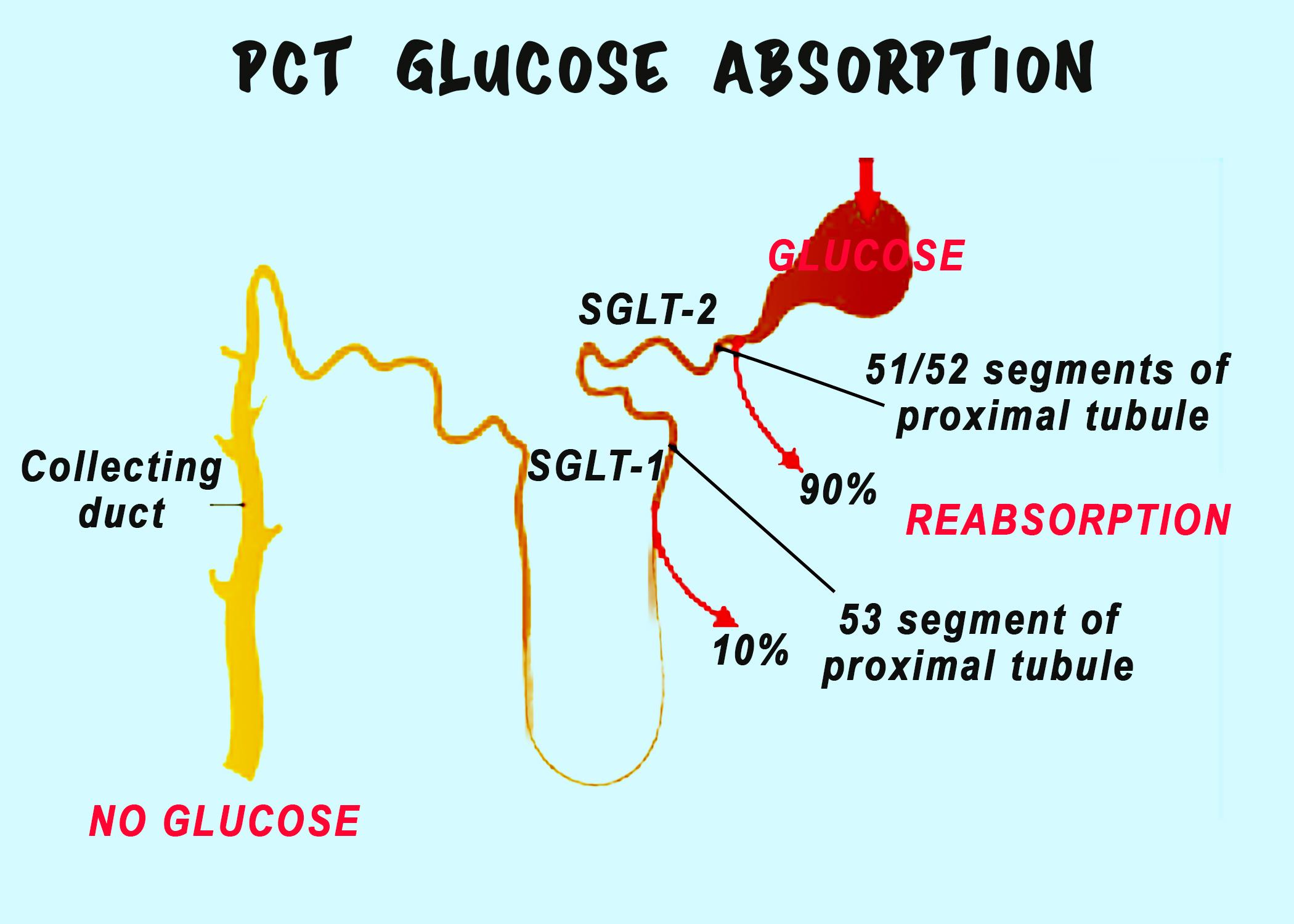
In the kidney, glucose is mainly absorbed in
(a)Loop of Henle
(b)Proximal convoluted tubules
(c)Distal, convoluted tubules
(d)Bowman's capsule
Answer
557.4k+ views
Hint Glucose is a monosaccharide which is a category of carbohydrate and is made by plants and algae during the process of photosynthesis from water and carbon dioxide by using energy from sunlight.
Complete answer:
In the kidney, glucose is mainly absorbed in the proximal convoluted tubules which is the segment of nephron present in the kidney. It consists of a luminal brush border which is present on the luminal surface of the epithelial cells of the nephron and is covered with densely packed microvilli that form a border that is visible under the light microscope and gives the brush border cell its name. The cytoplasm within the cell is densely packed and is largely found in the basal region with the high quantity of mitochondria that gives the cell an acidophilic appearance. The proximal tubule is divided into two sections which are the pars convoluted and the pars recta. The pars convoluta is the initial convoluted portion and the pars recta are the straight descending portion. The tubule helps with the regulation of pH of the filtrate by exchanging hydrogen ions and is responsible for the secretion of organic acids such as creatinine and others.
Additional information:
The kidney is not a major organ of the lymphatic system. The lymphatic system is not a closed system and helps in the functioning of immune defence. The kidney is an organ that is bean-shaped and constitutes the renal system. It helps in passing the urine waste from the body and in the filtering of the blood before sending it back to the heart. It maintains the overall fluid balance and regulates the minerals from the blood. The waste materials from food, medications, and toxic substances get filtered by the kidney. It helps in creating hormones that produce red blood cells and regulate blood pressure and promotes bone health. It is about 12 cm in length in adult humans and receives blood from the paired renal arteries. The nephron is the structural and functional unit of the kidney which is produced around 1 million in an adult human.

So, the correct answer is 'Proximal convoluted tubules'.
Note: An average kidney weighs up to 4 to 6 ounces and is big as a cellphone. It is estimated that people can live without Kidneys but require dialysis and the spleen can be removed if it’s damaged and people without a spleen are more prone to infections.
Complete answer:
In the kidney, glucose is mainly absorbed in the proximal convoluted tubules which is the segment of nephron present in the kidney. It consists of a luminal brush border which is present on the luminal surface of the epithelial cells of the nephron and is covered with densely packed microvilli that form a border that is visible under the light microscope and gives the brush border cell its name. The cytoplasm within the cell is densely packed and is largely found in the basal region with the high quantity of mitochondria that gives the cell an acidophilic appearance. The proximal tubule is divided into two sections which are the pars convoluted and the pars recta. The pars convoluta is the initial convoluted portion and the pars recta are the straight descending portion. The tubule helps with the regulation of pH of the filtrate by exchanging hydrogen ions and is responsible for the secretion of organic acids such as creatinine and others.
Additional information:
The kidney is not a major organ of the lymphatic system. The lymphatic system is not a closed system and helps in the functioning of immune defence. The kidney is an organ that is bean-shaped and constitutes the renal system. It helps in passing the urine waste from the body and in the filtering of the blood before sending it back to the heart. It maintains the overall fluid balance and regulates the minerals from the blood. The waste materials from food, medications, and toxic substances get filtered by the kidney. It helps in creating hormones that produce red blood cells and regulate blood pressure and promotes bone health. It is about 12 cm in length in adult humans and receives blood from the paired renal arteries. The nephron is the structural and functional unit of the kidney which is produced around 1 million in an adult human.

So, the correct answer is 'Proximal convoluted tubules'.
Note: An average kidney weighs up to 4 to 6 ounces and is big as a cellphone. It is estimated that people can live without Kidneys but require dialysis and the spleen can be removed if it’s damaged and people without a spleen are more prone to infections.
Recently Updated Pages
The number of solutions in x in 02pi for which sqrt class 12 maths CBSE

Write any two methods of preparation of phenol Give class 12 chemistry CBSE

Differentiate between action potential and resting class 12 biology CBSE

Two plane mirrors arranged at right angles to each class 12 physics CBSE

Which of the following molecules is are chiral A I class 12 chemistry CBSE

Name different types of neurons and give one function class 12 biology CBSE

Trending doubts
One Metric ton is equal to kg A 10000 B 1000 C 100 class 11 physics CBSE

What is 1s 2s 2p 3s 3p class 11 chemistry CBSE

Discuss the various forms of bacteria class 11 biology CBSE

State the laws of reflection of light

Explain zero factorial class 11 maths CBSE

An example of chemosynthetic bacteria is A E coli B class 11 biology CBSE




